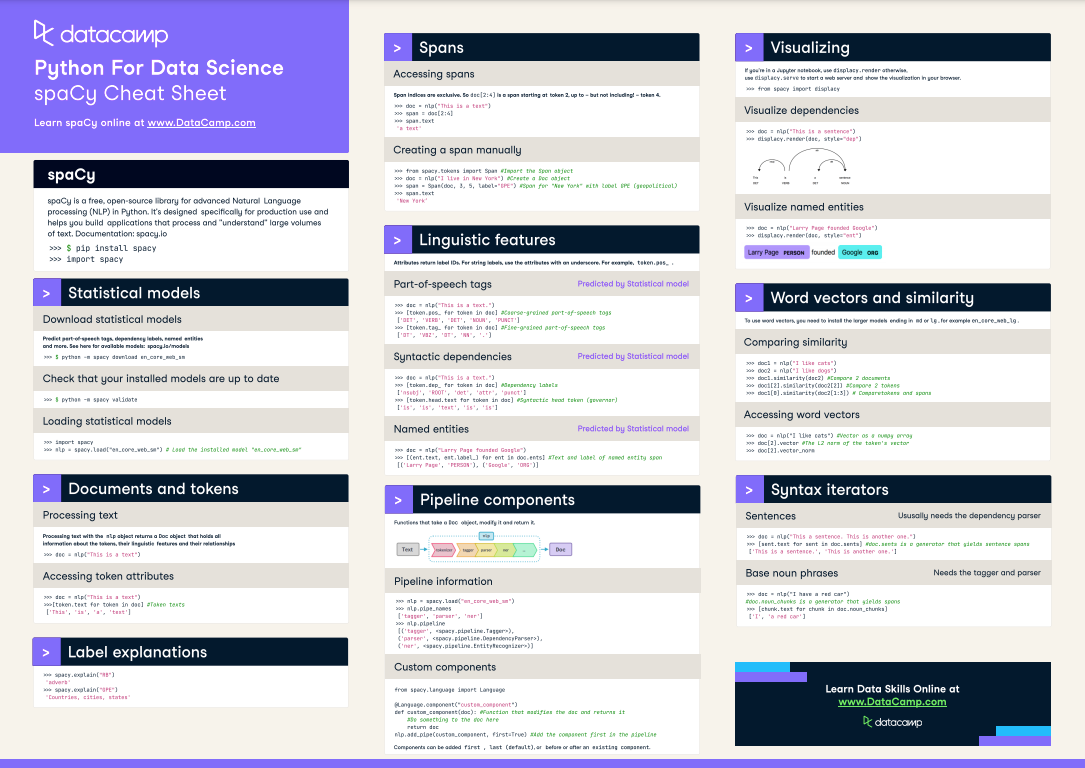spaCy Cheat Sheet: Advanced NLP in Python
Check out the first official spaCy cheat sheet! A handy two-page reference to the most important concepts and features.
Updated Aug 2021 · 6 min read
RelatedSee MoreSee More
blog
Attention Mechanism in LLMs: An Intuitive Explanation
Learn how the attention mechanism works and how it revolutionized natural language processing (NLP).
Yesha Shastri
8 min
blog
Top 13 ChatGPT Wrappers to Maximize Functionality and Efficiency
Discover the best ChatGPT wrappers to extend its capabilities
Bex Tuychiev
5 min
blog
The Top 21 Airflow Interview Questions and How to Answer Them
Master your next data engineering interview with our guide to the top 21 Airflow questions and answers, including core concepts, advanced techniques, and more.
Jake Roach
13 min
blog
The 4 Best Data Analytics Bootcamps in 2024
Discover the best data analytics bootcamps in 2024, discussing what they are, how to choose the best bootcamp, and you can learn.
Kevin Babitz
5 min
blog
A Guide to Corporate Data Analytics Training
Understand the importance of corporate data analytics training in driving business success. Learn about key building blocks and steps to launch an effective training initiative tailored to your organization's needs.
Kevin Babitz
6 min
tutorial
Encapsulation in Python Object-Oriented Programming: A Comprehensive Guide
Learn the fundamentals of implementing encapsulation in Python object-oriented programming.
Bex Tuychiev
11 min



